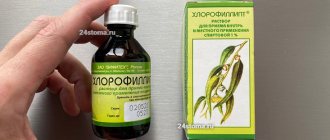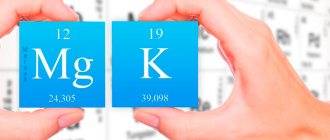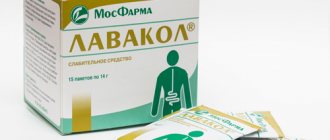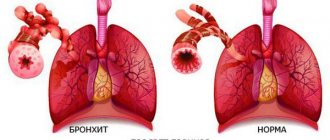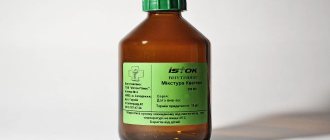Pharmacology
Panangin is an important source of microelements. The medication helps maintain electrolyte balance. Involved in the metabolic process, has an antiarrhythmic effect.
Potassium is responsible for the normal functioning of the heart, conducting nerve impulses along the fibers. With a lack of this substance, there is excitability of nerves and tissues. With a small amount of potassium, the coronary arteries dilate, and with a large dosage, a narrowing of the lumen is observed.
Magnesium is necessary for processes associated with the intake and expenditure of energy. The trace element is present in the pentose phosphate structure of DNA and is involved in the process of cell division and growth, and RNA synthesis. Magnesium is a natural blocker of slow calcium channels and prevents the release of free fatty acids.
The medicine is well absorbed. Exits through the kidneys.
How to use
Pills
The medicine in tablet form is intended for oral administration. You can take 2 tablets three times a day. For maintenance purposes, you can take 1 tablet three times a day. The treatment course is 20-25 days.
In special cases, an additional therapeutic course may be required.
Intravenous administration
Panangin in the form of a solution should be administered intravenously slowly, drip-wise. The rate of administration of the drug should not be more than 25 drops per minute. This procedure can be carried out no more than 2 times a day. No more than 300 ml can be administered at a time. The dosage of the medicine for pregnant women does not require adjustment and is carried out according to the standard scheme.
For prevention purposes
Patients are often interested in questions regarding the benefits and harms of a drug. It is worth understanding that Panangin can cause many negative reactions, so you should not use it for preventive purposes. This is explained by the fact that taking medications will cause the body to become accustomed to a certain content of microelements or may lead to an excess of these microelements in the human body, which will entail many negative consequences.
Adverse reactions
The drug may cause the following side effects:
- the appearance of ulcers in the stomach;
- diarrhea;
- pain in the epigastric region;
- hemorrhage from the stomach, intestines;
- nausea, vomiting;
- feeling of dryness in the mouth;
- skin irritations;
- dizziness;
- excessive sweating.
With rapid intravenous infusion, an excessive increase in the amount of trace elements in the blood occurs.
Panangin 10 ml No. 5 solution d/in.amp.
Instructions for medical use of the drug
Tradename
Panangin®
International nonproprietary name
No
Dosage form
Concentrate for solution for infusion, 10 ml
Compound
One ampoule contains active ingredients: magnesium aspartate 400.00 mg (as magnesium aspartate tetrahydrate 499.80 mg), potassium aspartate 452.00 mg (as potassium aspartate hemihydrate 475.73 mg), excipients: potassium hydroxide, 10% solution , water for injections.
Description
Transparent, colorless or slightly greenish solution.
Pharmacotherapeutic group
Mineral supplements. Other minerals. ATX code A12СХ
Pharmacological properties
Pharmacokinetics
Potassium and magnesium ions, as important intracellular cations, are involved in the work of a number of enzymes, in the process of binding macromolecules with subcellular elements and in the mechanism of muscle contraction at the molecular level. The ratio of extra- and intracellular concentrations of potassium, calcium, sodium and magnesium ions affects myocardial contractility. Aspartate as an endogenous substance is a carrier of potassium and magnesium ions; has a pronounced affinity for cells, its salts undergo dissociation only to a small extent. As a result, ions penetrate into the intracellular space in the form of complex compounds. Magnesium and potassium aspartate improve myocardial metabolism. Insufficient potassium and magnesium content in the body increases the risk of developing arterial hypertension, atherosclerotic lesions of the coronary vessels, heart rhythm disturbances, and myocardial pathology.
Indications for use
- for additional therapy for chronic heart diseases (for heart failure, in the post-fracture period)
- heart rhythm disturbances, mainly ventricular arrhythmias
- in combination with digitalis preparations
Directions for use and doses
The drug is intended for intravenous administration only. For this purpose, use the contents of 1-2 ampoules in a 5% glucose solution and administer it as an intravenous infusion slowly, drip-wise. If necessary, the dose can be repeated after 4-6 hours. The duration of therapy is determined individually.
The drug is suitable for combination therapy.
The maximum single dose is 2 ampoules (20 ml) of Panangin®; if necessary, re-administration is possible after 4-6 hours.
The maximum daily dose is 4 ampoules (40 ml) of Panangin®.
Use in pediatrics
There are no data on the safety and effectiveness of the drug in children and adolescents under 18 years of age.
Side effects
- the appearance of symptoms of hyperkalemia/hypermagnesemia with rapid administration of the drug (for a description of symptoms, see the section “Overdose”)
Contraindications
- acute and chronic renal failure
- Addison's disease
- III degree atrioventricular block, cardiogenic shock (BP < 90 mm Hg)
- severe hyperkalemia
- hypersensitivity to the components of the drug
Drug interactions
When Panangin® is used simultaneously with potassium-sparing diuretics and/or ACE inhibitors, hyperkalemia may develop.
special instructions
Rapid administration of the drug may cause facial flushing. Caution should be exercised when prescribing the drug to patients with diseases accompanied by hyperkalemia. In this category of patients, it is recommended to regularly examine the concentrations of electrolytes in the blood serum.
Pregnancy and lactation
It is possible to use the drug Panangin® during pregnancy and lactation according to indications.
Features of the effect of the drug on the ability to drive a vehicle or potentially dangerous mechanisms
When using the drug, care must be taken when driving vehicles or other potentially dangerous mechanisms.
Overdose
With long-term use of the drug, cases of overdose have not been recorded.
Symptoms of hyperkalemia: fatigue, muscle weakness, paresthesia, confusion, cardiac dysfunction (bradycardia, atrioventricular block, arrhythmia, cardiac arrest).
Symptoms of hypermagnesemia: decreased neuromuscular excitability, nausea, vomiting, drowsiness, decreased blood pressure. With a sharp increase in the concentration of magnesium ion in the blood: inhibition of deep tendon reflexes, respiratory paralysis, coma.
Treatment: discontinuation of the drug, symptomatic therapy (intravenous administration of calcium chloride solution at a dose of 100 mg/min, hemodialysis if necessary).
Release form and packaging
10 ml of the drug in colorless glass ampoules with a breaking point.
5 ampoules are placed in a plastic blister pack.
1 blister pack together with instructions for medical use in the state and Russian languages are placed in a cardboard box.
Storage conditions
Store at temperatures between 15°C and 30°C. Keep out of the reach of children!
Shelf life
3 years. Do not use after expiration date.
Conditions for dispensing from pharmacies
On prescription.
Overdose
It is not recommended to exceed the prescribed dose. An overdose of the drug is possible, manifested by the following symptoms:
- excessive levels of potassium and magnesium ions in the blood;
- muscle hypotonicity;
- problems with the functioning of the heart, even to the point of cardiac arrest;
- arrhythmia;
- changes on the electrodiogram.
If such signs appear, you should immediately inject a solution of dextrose and sodium chloride intravenously. Depending on the patient's condition, peritoneal dialysis may be required.
Panangin solution d/v/injection 10ml No. 5
Compound
Active ingredients: potassium aspartate 45.2 mg; magnesium aspartate 40 mg. Excipients: water for injection - up to 10 ml.
Pharmacokinetics
No data.
Indications for use
To eliminate potassium and magnesium deficiency as an adjuvant:
- with various manifestations of coronary artery disease, including acute myocardial infarction;
- for chronic heart failure;
- for cardiac arrhythmias (including arrhythmias caused by an overdose of cardiac glycosides).
Contraindications
- hypersensitivity to the components of the drug;
- acute and chronic renal failure;
- Addison's disease;
- AV blockade II-III degree;
- cardiogenic shock (BP <90 mm Hg);
- hyperkalemia;
- hypermagnesemia;
- adrenal insufficiency;
- myasthenia gravis;
- dehydration;
- pregnancy;
- breastfeeding period;
- age under 18 years (efficacy and safety have not been established).
With caution: AV blockade of the first degree, severe liver dysfunction, metabolic acidosis, with a risk of edema, impaired renal function in the event that regular monitoring of magnesium content in the blood serum is impossible (risk of cumulation, toxic magnesium content) ; hypophosphatemia, urolithiasis associated with impaired metabolism of calcium, magnesium and ammonium phosphate.
Directions for use and doses
The drug is intended for intravenous administration only.
The contents of 1-2 ampoules should be diluted in 50-100 ml of 5% dextrose (glucose) solution and administered intravenously as a slow drip infusion (20 drops/min). If necessary, repeated administration is possible after 4-6 hours.
The drug can be used as part of combination therapy.
Storage conditions
The drug should be stored out of the reach of children at a temperature of 15° to 30°C.
Best before date
3 years.
special instructions
With rapid intravenous administration of the drug, skin hyperemia may develop.
Particular caution should be exercised in the presence of diseases accompanied by hyperkalemia. In these cases, it is recommended to monitor the content of potassium ions in the blood plasma.
Description
A drug that replenishes the deficiency of potassium and magnesium in the body.
Dosage form
The concentrate for the preparation of solution for infusion is a colorless or slightly greenish, transparent solution.
Use in children
Age from 18 years (efficacy and safety have not been established).
Pharmacodynamics
Panangin® is a source of potassium and magnesium ions.
One of the most important functions of potassium ions is to maintain the membrane potential of neurons, myocytes and excitable structures of myocardial tissue. An imbalance between intracellular and extracellular potassium content leads to a decrease in cardiac contractility, arrhythmia, tachycardia and increased toxicity of cardiac glycosides.
Magnesium is an important cofactor in more than 300 enzymatic reactions, including energy metabolism and the synthesis of proteins and nucleic acids. In addition, magnesium plays an important role in the functioning of the heart: it reduces contractility and heart rate, leading to a decrease in myocardial oxygen demand. Decreased contractility of smooth muscle myocytes in the walls of arterioles, incl. coronary, leads to vasodilation and increased coronary blood flow. Magnesium has an anti-ischemic effect on myocardial tissue.
The combination of potassium and magnesium ions in one preparation is based on the fact that potassium deficiency in the body is often accompanied by magnesium deficiency and requires simultaneous correction of the content of both ions in the body. Further, with simultaneous correction of the levels of these electrolytes, an additive effect is observed (low levels of potassium and/or magnesium have a proarrhythmogenic effect), in addition, potassium and magnesium reduce the toxicity of cardiac glycosides without affecting their positive inotropic effect.
Side effects
With rapid intravenous administration, symptoms of hyperkalemia (fatigue, myasthenia gravis, paresthesia, confusion, cardiac arrhythmia / bradycardia, AV block, arrhythmias, cardiac arrest) and hypermagnesemia (decreased neuromuscular excitability, gagging, vomiting, lethargy) may develop. , decreased blood pressure). It is also possible to develop phlebitis, AV block and a paradoxical reaction (increased number of extrasystoles).
Use during pregnancy and breastfeeding
There are no data on the negative effects of the drug during pregnancy and lactation (breastfeeding).
IV administration of the drug during pregnancy and lactation is contraindicated.
Interaction
Strengthens the negative dromo- and bathmotropic effect of antiarrhythmic drugs.
Eliminates hypokalemia caused by GCS.
Due to the magnesium content, it reduces the effectiveness of neomycin, polymyxin B, tetracycline and streptomycin.
Cyclosporine, potassium-sparing diuretics, heparin, ACE inhibitors may increase the risk of hyperkalemia.
Anesthetics enhance the inhibitory effect of magnesium on the central nervous system.
May enhance neuromuscular blockade caused by depolarizing muscle relaxants (atracurium besilate, dexamethonium bromide, suxamethonium chloride/bromide/iodide).
Calcitriol increases the concentration of magnesium in the blood plasma, calcium supplements reduce the effect of magnesium supplements.
Beta-blockers and NSAIDs increase the risk of developing hyperkalemia up to the development of arrhythmia and asystole.
Pharmaceutically compatible with solutions of cardiac glycosides (improves their tolerability, reduces the undesirable effects of cardiac glycosides.
Overdose
To date, cases of overdose have not been described. In case of overdose, the risk of developing hyperkalemia and hypermagnesemia increases.
Symptoms of hyperkalemia: fatigue, myasthenia gravis, paresthesia, confusion, cardiac arrhythmia (bradycardia, AV block, arrhythmias, cardiac arrest).
Symptoms of hypermagnesemia: decreased neuromuscular excitability, retching, vomiting, lethargy, decreased blood pressure. With a sharp increase in the content of magnesium ions in the blood - inhibition of tendon reflexes, respiratory paralysis, coma.
Treatment: discontinuation of the drug, symptomatic therapy (iv administration of 100 mg/min calcium chloride solution), if necessary, hemodialysis.
Impact on the ability to drive vehicles and operate machinery
Not studied.
Combination with other medications
The drug may enhance the negative effects of antiarrhythmic drugs. Panagin helps to cope with the lack of potassium ions in the blood, which is associated with prolonged use of diuretic medications. Non-steroidal anti-inflammatory drugs, heparin, cyclosporine, increase the likelihood of hyperkalemia. When using general anesthetics, the inhibitory effect of the drug on the central nervous system increases.
Increased neuromuscular blockade can occur under the influence of decamethonium, suxamethonium and atracuronium. The use of astringents and coating agents reduces the absorption of trace elements in the stomach.
The drug improves the tolerability of antiarrhythmic and cardiotonic drugs.
Panangin 10ml No. 5 ampoules
Compound
1 ml of solution for intravenous administration contains: potassium aspartate 45.2 mg, magnesium aspartate 40 mg. Excipients: water for injection.
Release form
Solution for intravenous administration.
Package
There is 10 ml of solution in a colorless glass ampoule. There are 5 ampoules in a package.
pharmachologic effect
Panangin is a drug that affects metabolic processes. Source of potassium and magnesium ions. Potassium and magnesium are intracellular cations that play a major role in the functioning of many enzymes, the interaction of macromolecules and intracellular structures, and in the mechanism of muscle contractility. The intra- and extracellular ratio of potassium, magnesium, calcium and sodium ions affects myocardial contractility. A low level of potassium and/or magnesium ions in the internal environment can have a proarrhythmogenic effect, predisposing to the development of arterial hypertension, atherosclerosis of the coronary arteries and the occurrence of metabolic changes in the myocardium. One of the most important physiological functions of potassium is maintaining the membrane potential of neurons, myocytes and other excitable structures of myocardial tissue. An imbalance between the intra- and extracellular potassium content leads to a decrease in myocardial contractility, the occurrence of arrhythmia, tachycardia and increased toxicity of cardiac glycosides. Magnesium is a cofactor in >300 enzymatic reactions in energy metabolism and the synthesis of proteins and nucleic acids. Magnesium reduces contractile tension and heart rate, leading to a decrease in myocardial oxygen demand. Magnesium has an anti-ischemic effect on myocardial tissue. Decreased contractility of smooth muscle myocytes in the walls of arterioles, incl. coronary, leads to vasodilation and increased coronary blood flow. The combination of potassium and magnesium ions in one preparation is justified by the fact that potassium deficiency in the body is often accompanied by magnesium deficiency and requires simultaneous correction of the content of both ions in the body. With simultaneous correction of the levels of these electrolytes, an additive effect is observed, in addition, potassium and magnesium reduce the toxicity of cardiac glycosides without affecting their positive inotropic effect. Endogenous aspartate (asparaginate), due to its slight dissociation, acts as a conductor of ions into cells in the form of complex compounds. Potassium aspartate and magnesium aspartate improve myocardial metabolism.
Indications
As part of complex therapy for heart failure, myocardial infarction, cardiac arrhythmias (mainly ventricular arrhythmias). — To improve the tolerability of cardiac glycosides.
Contraindications
Acute and chronic renal failure. Oliguria, anuria. Addison's disease. AV block II and III degrees. Cardiogenic shock. Hyperkalemia. Hypermagnesemia. Hypersensitivity to the components of the drug.
special instructions
The drug should be prescribed with caution to patients with an increased risk of developing hyperkalemia. In this case, it is necessary to regularly monitor the level of potassium ions in the blood plasma. Before taking the drug, the patient should consult a doctor. With rapid intravenous administration of the drug, skin hyperemia may develop. Use for impaired renal function: the drug is contraindicated in the following cases - acute and chronic renal failure, oliguria, anuria. Effect on the ability to drive vehicles and operate machinery: the drug does not affect the ability to drive a car or engage in activities that require increased concentration and speed of psychomotor reactions.
Directions for use and doses
The drug is prescribed intravenously as a slow infusion. Single dose - 1-2 ampoules, if necessary, repeated administration after 4-6 hours is possible. To prepare a solution for IV infusion, the contents of 1-2 ampoules. dissolve in 50-100 ml of 5% glucose solution.
Side effects
With rapid intravenous administration, symptoms of hyperkalemia and/or hypermagnesemia may develop.
Drug interactions
When used simultaneously with potassium-sparing diuretics (triamterene, spironolactone), beta-blockers, cyclosporine, heparin, ACE inhibitors, NSAIDs, the risk of developing hyperkalemia up to the appearance of arrhythmia and asystole increases. The use of potassium supplements together with corticosteroids eliminates the hypokalemia they cause. Under the influence of potassium, a decrease in the undesirable effects of cardiac glycosides is observed. The drug enhances the negative dromo- and bathmotropic effects of antiarrhythmic drugs. Due to the presence of potassium ions in the drug, when Panangin is used with ACE inhibitors, beta-blockers, cyclosporine, potassium-sparing diuretics, heparin, NSAIDs, the development of hyperkalemia is possible (monitoring the level of potassium in the blood plasma is necessary); with anticholinergic drugs - a more pronounced decrease in intestinal motility; with cardiac glycosides - reducing their effect. Magnesium preparations reduce the effectiveness of neomycin, polymyxin B, tetracycline and streptomycin. Anesthetics enhance the inhibitory effect of magnesium on the central nervous system. When using Panangin with atracurium, dexamethonium, suxamethonium, neuromuscular blockade may be enhanced; with calcitriol - increasing the level of magnesium in the blood plasma; with calcium supplements, a decrease in the effect of magnesium ions is observed. When Panangin is used simultaneously with potassium-sparing diuretics and ACE inhibitors, the risk of developing hyperkalemia increases (the level of potassium in plasma should be monitored).
Overdose
Symptoms: with intravenous administration - hyperkalemia, hypermagnesemia.
Treatment: discontinuation of the drug, symptomatic therapy (iv administration of 100 mg/min calcium chloride solution), if necessary, hemodialysis and peritoneal dialysis.
Storage conditions
The drug should be stored at a temperature of 15 to 30°C.
Best before date
3 years.
Conditions for dispensing from pharmacies
Dispensed with a doctor's prescription
